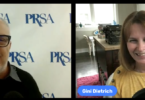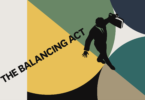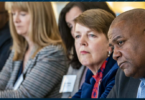Public relations continues to be an inviting profession for journalists. To help these professionals interested in pursuing new careers in communications, PRSA is offering the “Transitioning from Journalism to PR & Comms” certificate program starting on March 12, a comprehensive offering addressing this evolving landscape.
Per its description: “This program serves as a bridge, connecting the needs of PR and communications entities with the skill sets of journalists and other professionals eyeing a transition. Delivered in a certificate format, the program not only furnishes participants with an understanding of the relevance of their skills in various PR roles but also equips them with the knowledge and tools necessary to seamlessly adapt these skills to diverse PR initiatives.”
Two longtime PRSA members are serving as the instructors: Jeanne Salvatore, president at JMS Communications and a lecturer of public relations at Seton Hall University, and Sherry Goldman, president of Goldman Communications Group and an adjunct professor in public relations at the City College of New York. During the five-week course, several co-presenters will join them.
Here, Salvatore and Goldman talk with PRsay, jointly answering questions on the certificate program and the transition from other professions into public relations.
Why do you think the PR/comms profession is a natural landing spot for journalists looking to make a career change?
PR professionals and journalists have very similar skills. They both are storytellers. PR people need journalists to help us tell our stories to a wide audience and give our stories the third-party endorsement and credibility. Journalists need PR people to help them identify key trends and issues that matter to their audiences and to provide experts who can speak on these trends and issues.
The media marketplace is also changing. Traditional media continues to shrink while job opportunities in public relations, integrated communications, and social media expand and grow.
Is the certificate program specifically for journalists, or will there be takeaways for professionals in other fields?
Absolutely! While this certificate program is designed to help journalists understand how to transition their skills and expertise for PR opportunities, many others — such as digital marketers, content creators, advertising pros, and social media experts — have related skill sets and knowledge and will benefit from our program too.
In addition, we will cover many of the fundamentals of media relations, so our program also would be beneficial to those starting out in public relations — including students and new professionals in PR, media and journalism.
Jeanne, aside from teaching, you’ve held senior-level comms roles and worked in media relations. Do you think working in news editorial naturally gives these professionals a leg up on the comms responsibilities?
Yes. Many of the most successful PR executives were former journalists. Journalists have excellent communications skills, such as writing and the ability to speak clearly and concisely. Former journalists also have a firsthand understanding of how the media works and often have subject-matter expertise. Most of all, they understand what news is and how to create a compelling news hook. Many of the most successful PR professionals were either former journalists or journalism students.
Sherry, before your agency career, you worked as a reporter for trade publications as well as in local NYC TV news. How was your transition into public relations? What did you wish you knew when moving into the profession?
I was recruited into public relations by one of my PR contacts when I was fashion editor of the trade magazine Sporting Goods Business. He thought I was a good fit for a position at G.S. Schwartz & Company, which was looking for an account person who knew sports and fashion. I was the fashion editor of Sporting Goods Business and a sports junkie, and was willing to hire someone who wasn’t in PR but had relevant skills.
Initially, I found that being on the PR side somewhat challenging. I was a good writer, researcher and storyteller, and had been on the other side of both print and broadcast pitches, but I did not fully understand all the nuances of public relations prior to joining the agency. I didn’t understand how to craft a good pitch and how to pitch a story. I also didn’t understand how to work with clients or how to deliver results for clients, so there were bumps for me.
Thankfully, I learned on the job, but everyone might not have the experience or support I did, so we think this certificate program will help with that learning curve.
I will say that having that media background for me has been invaluable. Understanding how the media works and its constraints has helped me better counsel clients on their messaging and media campaigns and also better shape and tell my clients’ stories.
Will the program feature any other former journalists?
Yes, we will feature many guest speakers; most will be former journalists who made the leap into PR careers, and they are very excited to share their experiences with those yet to make the leap. So far, our confirmed guest speakers include Chris Vacarro, who as a journalist worked at USA Today and is now the communications director for the National Weather Service; Chris Winans, who worked at The Wall Street Journal before his extensive PR career, and Tony Sclafani, who worked at the New York Daily News before his PR career working in government, corporate and now as managing director of Mercury LLC.
What do you think might be the most challenging aspect to master for people transitioning into public relations?
One of the most challenging things to master is balancing the journalist in them with the different needs and priorities of a PR person who is advocating for their client and/or employer. The balance impacts what stories to tell, when to tell them and how to tell them. The ethical considerations for public relations and journalism have similarities and differences.
In addition, public relations is so much broader than media relations, which is probably the PR tactic that journalists/media identify most with, so those transitioning into public relations will need to understand the broad breadth of it. Our certificate program will also cover all of this.
John Elsasser is the publications director of PRSA and editor-in-chief of its award-winning publication, Strategies & Tactics. Before joining PRSA in 1994, he worked as a newspaper reporter and magazine writer in Columbus, Ohio.
[Photo credit: madmat]






